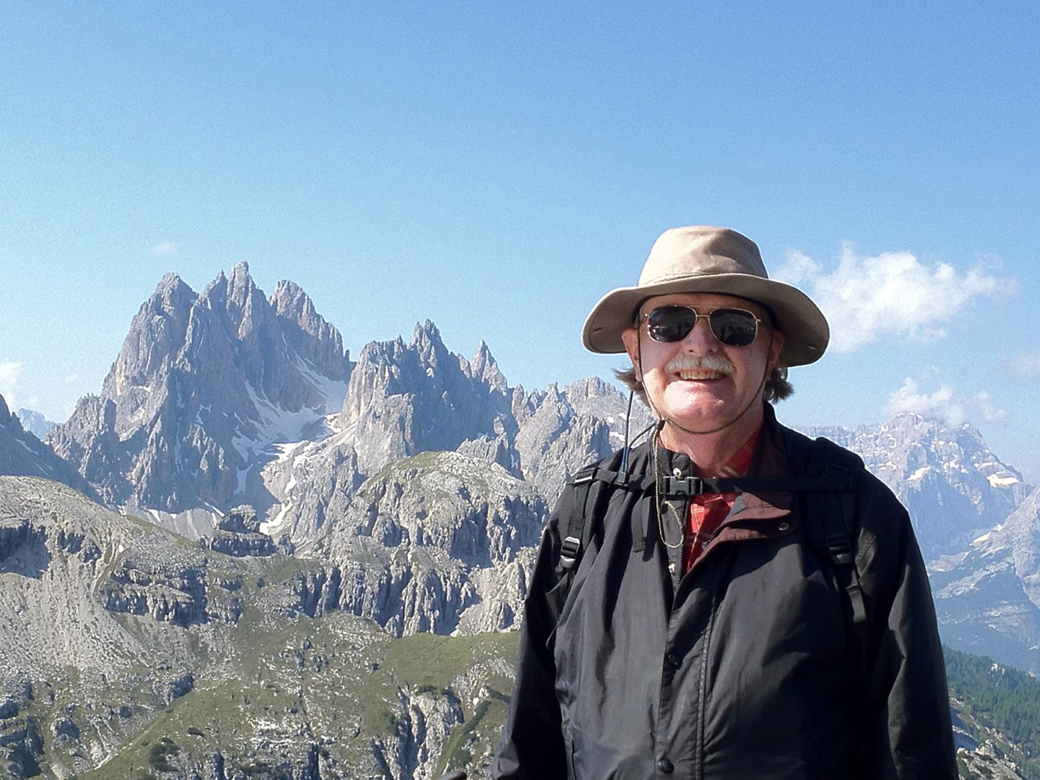
First, I would like to thank all my students. They have been the most important people for me in paleontology, and many of them are here, including Jingmai. But, there have been many other colleagues and I would like to tell you a little about some of them.
I received my degree from Haverford, but majored in the Geology Department at Bryn Mawr. Bruce Saunders was my undergrad advisor, and my wife Sarah and I met at Bryn Mawr. Sarah and I got married and went off to Binghamton where she finished her B.S. and I got a master's degree with Dick Beerbower, Paul Enos, and Don Kissling. I did a master's thesis there on Devonian stromatoporoid and coral reefs in upstate New York.
Sarah and I then headed off to Indiana for Ph.D.s, with my goal to move from reefs to a dissertation on level bottom marine paleoecology. There, Don Hattin was my advisor and I learned much from Gary Lane and Bob Dodd. I had the wonderful fortune to have as my fellow paleontology Ph.D. classmates Bill Ausich, Tom Kammer, and Johnny Waters.
After I spent a post-doc year at the Smithsonian with the USGS, interacting with the likes of Norm Sohl, Erle Kauffman, and Bill Sliter, Sarah and I headed out to Los Angeles where she began a post-doc at UCLA and I started at USC in 1979. A few years later Sarah moved to USC as a neurobiology professor and we have now been in LA for 40 years.
The USC Earth Sciences Department has been a great home for me. I was hired there by Bob Douglas and Donn Gorsline and we were soon joined by Al Fischer. In later years I have had wonderful collaborations with Frank Corsetti, Will Berelson, and Josh West.
I first met Dave Jablonski and Sue Kidwell while on a job interview at Yale, when we were all graduate students. As fate would have it, during my first year at USC Sue was a visiting grad student with Donn Gorsline and Dave was a post-doc with Jim Valentine at UC Santa Barbara. So we all saw a lot of each other, and during this time our onshore-offshore project was born.
While much was going on at USC, I started to visit China and develop new collaborations there. As we have already heard tonight from Luis and Jingmai, study of China's examples of exceptional fossil preservation was picking up speed in the 1990s and I became seriously involved with studies of the Cambrian Chengjiang and Ediacaran Weng'an Biotas. This was in collaboration with Junyuan Chen and his colleagues at the Nanjing Institute of Geology and Palaeontology, which involved a lot of amazing field work and adventure in China. Much of this work included collaboration with Eric Davidson at Caltech, who was a molecular developmental biologist with a fascination for what fossils can tell you about evolution.
The ability to go anywhere in the world to study the fossils and rocks which will best solve the research questions you are asking has been one of the great things about paleontology in this day and age. To give you another example, along with this field work in China and other countries has been the opportunity to work on the end-Triassic mass extinction at fascinating outcrops in the high Andes of Peru, with USC and other colleagues. We could not have done this work without the collaborative efforts of Sylvia Rosas at the Pontifical Catholic University of Peru in Lima. Only through Sylvia could we have visited the outcrops we needed to study. And because of Sylvia, we made many good friends in Peru. I am hopeful that our ability to work in this way around the world continues uninhibited and stays free of political issues.
Along with all these international research opportunities, southern California has been a wonderful place to find exceptional colleagues to work with. Since my arrival at USC, my interactions with Bill Schopf at UCLA have been very rewarding, including a sabbatical semester spent there and many past and present research projects. I had a very stimulating collaboration and friendship with the late Eric Davidson at Caltech, not only on the Weng'an Biota but with our work on developing the new science of paleogenomics with sea urchin studies as the centerpiece. And, as you have heard from Luis and Jingmai, Luis and I have had an outstanding time for the past twenty years developing a joint graduate program on avian dinosaur evolution.
Because of worldwide experiences like these, we all know it is a true privilege to be a paleontologist, and I thank the Paleontological Society for this much appreciated honor.



